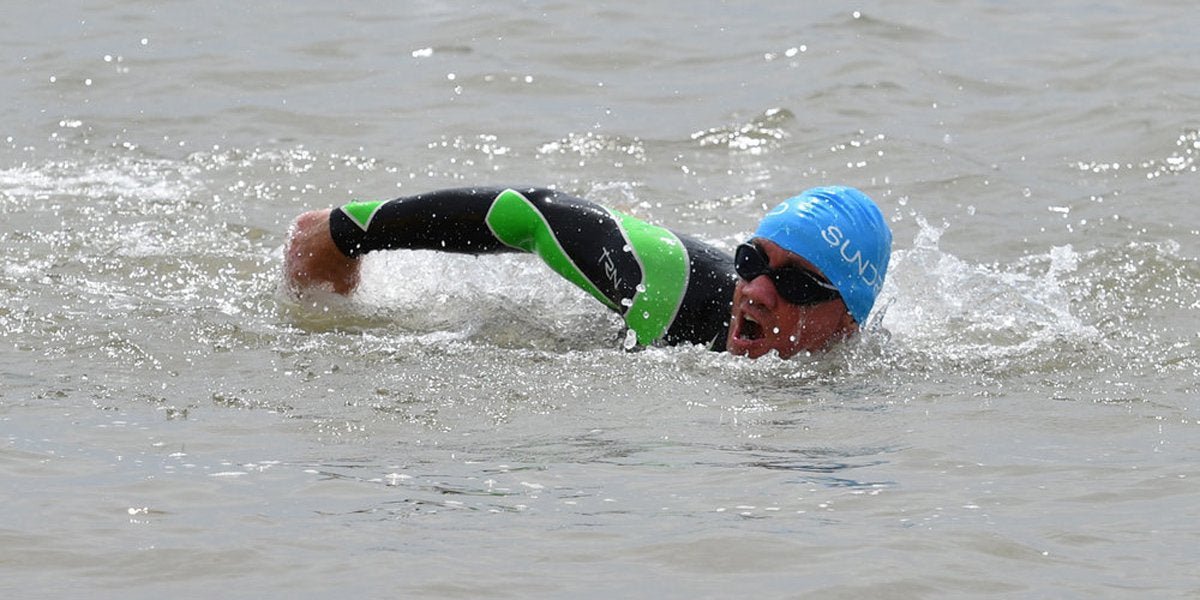
Once you’re comfortable in the water and swimming further and easier than before, the next challenge is to get quicker! Either because you want to beat your friends, set personal bests, finish further up the results, or potentially even qualify for age group teams.
There are three keys to getting faster at swimming:
- Reducing frontal resistance to the water
- Pulling/kicking with purpose
- Not rushing your stroke
Reducing your resistance to the water
This will mean that you can move faster and further with the same level of effort and this is a real foundation to strong and fast swimming. If you are able to focus on good posture in the water – i.e. looking down, lengthening your spine and engaging your core, then you’ll be in a really good place.
A simple trick to focus this is to streamline when you push off the wall every time. This is not cheating – a comment that I get from many athletes! This is a skill that will help you travel faster and with better form, improving the quality of your swims. Imagine it like a squat jump. When you push off the wall, if possible, squeeze your ears between your biceps with your hands together above your head. If shoulder mobility doesn’t allow this, just keep your arms in front of you but still aiming to tuck your chin down toward your chest.
All this will help lengthen your spine and keep your head in the right position – it’s your reset point every length. Finally, when you push off, you will automatically engage your core – meaning that your first few strokes will be among your best ever. Your challenge is then to try and maintain that as far down each length as you can!
Pulling and kicking with purpose
With resistance reduced, you can look to engage with the water more rather than moving your arms and legs just for the sake of moving them. Kick drills can teach you to kick smoothly rather than panic splashing your legs around. You can kick streamlined (see above), on your front or on your back, or do side kick to work on body roll – in any case, make sure that your legs are pushing against the water.
With your arms, you can do sculling drills to get used to feeling pressure of the water against your hands and forearms – and transferring this into doing your full stroke. Swimming with fists can have the same effect. Whatever drills you end up doing, mix them into doing full stroke so that you can feel where the drill is trying to work on in your stroke. Focus on each kick or pull having some purpose rather than trying to just do things for the sake of doing them!
Not rushing your stroke
Finally, with regards to swimming faster I like to think of the phrase "less haste, more speed". If you look at the top athletes in most sports – Jonny Wilkinson or Dan Carter in rugby, Messi or Ronaldo in football, rowers Heather Stanning and Helen Glover, swimmer Katie Ledecky etc – they never look like they are rushing, even though they are doing things at incredibly high speed.
Some of this comes down to the fact that they are very well practised. On top of this though, they know that they have all the time that they need to undertake the skills that they are doing. There is no rush. In the case of Glover & Stanning, or Katie Ledecky, their stroke rates are incredibly high – but they don’t look like they are rushing things. Again, think about connecting with the water and pushing – rather than just trying to throw your arms and legs around aimlessly to go quicker. Effort does not necessarily equal speed!
About the author: John Wood is a triathlete, triathlon coach, and Sundried ambassador.






